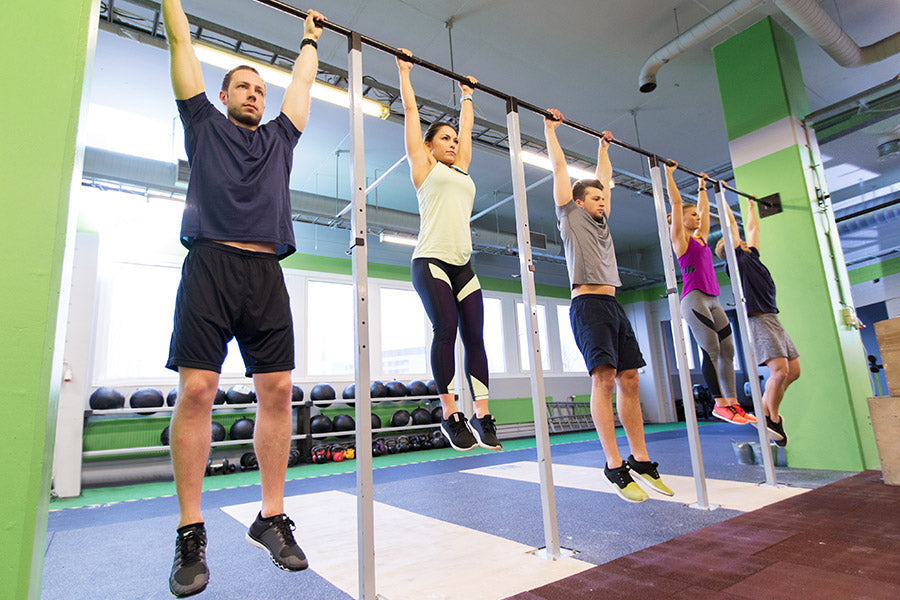Dead hang, a bar-hanging exercise that strengthens your upper body and gives it a perfect posture and shape.
It may look simple, but don’t let the simplicity of the movement fool you.
It is one of the most effective exercises with a wide range of benefits.
The best thing is people of all fitness levels can do it - so anyone can start reaping the rewards.
Without further ado, let's start the discussion:
What Is Dead Hang?
A "dead hang" is a hanging exercise that you can do at home. For this, you have to hang from a bar with your arms extended and your feet off the ground.
It might not sound like much, but dead hangs are a great way to build upper body strength.
Unlike pull-ups, in which you have to lift your body, in dead hangs, you just have to hold and balance your body weight under the bar.
When hanging from a bar, your body is forced to support your entire weight. It puts a lot of strain on your arms and shoulders, which helps build muscle.
There are two main types of dead hangs: passive and active.
Difference Between Passive and Active Dead Hangs
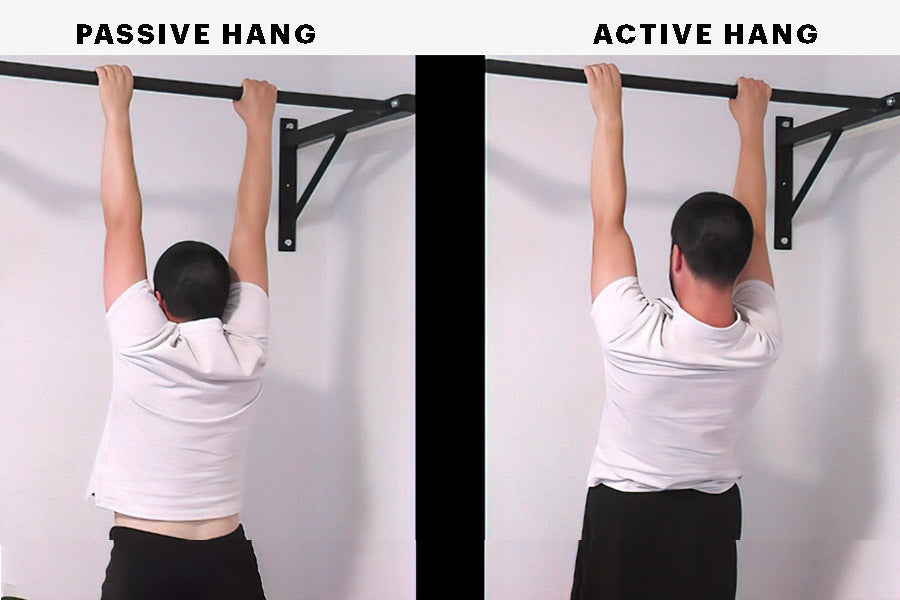
Passive hangs are performed with raised shoulders that relax your body, decompress your shoulders, and expand your spine (traction).
Active hangs regulate the scapular movements in three separate directions (depression, protraction, and retraction) using shoulder musculature.
Here's a quick breakdown of the differences between the two:
|
Feature |
Passive Hang |
Active Hang |
|
Position |
Relaxed Grip |
Engaged Grip |
|
Muscles Work |
Hands, forearms, and shoulder muscles |
Hands, forearms, core, lats, and shoulder muscles |
|
Purpose |
Stretching and grip improvement |
Upper body strength and stability |
|
Difficulty Level |
Easy: Requires less strength |
Difficult: Requires maintaining muscle tension |
|
Use in |
Stretching and mobility workout |
Strength training |
Dead Hang Benefits
The dead hang provides a wide range of benefits to your body by building strength and endurance of the muscle groups.
Following are the muscle groups worked and strengthened by the dead hang:
- Forearms
- Hands
- Latissimus Dorsi
- Pectoral Muscles
- Upper back
- Shoulders
- Core muscles
While getting these muscles, here are some benefits that you can enjoy by performing dead hangs:
Improve Grip Strength doing Dead Hang
Grip strength is improved by Dead hangs when we hold our body weight for a long period of time.
It is a grip-strengthening exercise. The longer we hold our weight, the stronger our grip gets.
A firm grip is necessary not only for holding your phone, but according to a study, having insufficient grip strength may increase your risk of having less mobility as you age.
Related Article: How to Fix the Issue of Losing Your Grip During Lifting
Spinal Decompression by Dead Hangs
The most popular question related to dead hangs is: do dead hangs decompress spine?
The answer is Yes!
When spinal decompression is performed, a "Dead Hang" opens up the space between the vertebrae, allowing the bulging disc to be brought back into place.
This releases pressure from the surrounding soft tissues and nerves.
Upper Body Stretch from Dead Hang
Dead hang is a spine hanging that provides a deep stretch to your entire back, including your lats, traps, and rhomboids, as well as your shoulder and arm muscles.
When muscles don't receive adequate stretching attention, they tend to shorten and become hyperactive, resulting in muscle imbalances and injury.
Related Article: 25 Most Effective Stretches to Do Before Exercising
Better Posture through Dead Hangs
Your posture can suffer from tight back muscles. Thus, the better stretched they are, the better your posture will be.
Dead hang can help you by decompressing your spine and restoring the space lost between your back's bones, joints, and discs.
As a result, it helps reduce lower back strain, enhances posture, and prevents injuries.
Strengthen Core by Dead Hang
When you perform a dead hang, your core muscles engage in an isometric contraction to stabilize your body.
You don’t move your body, but your core muscles constantly engage during the workout, and when you breathe deeply, your deeper core muscles get engaged, like the diaphragm and transverse abdominis.
How to Perform a Dead Hang?
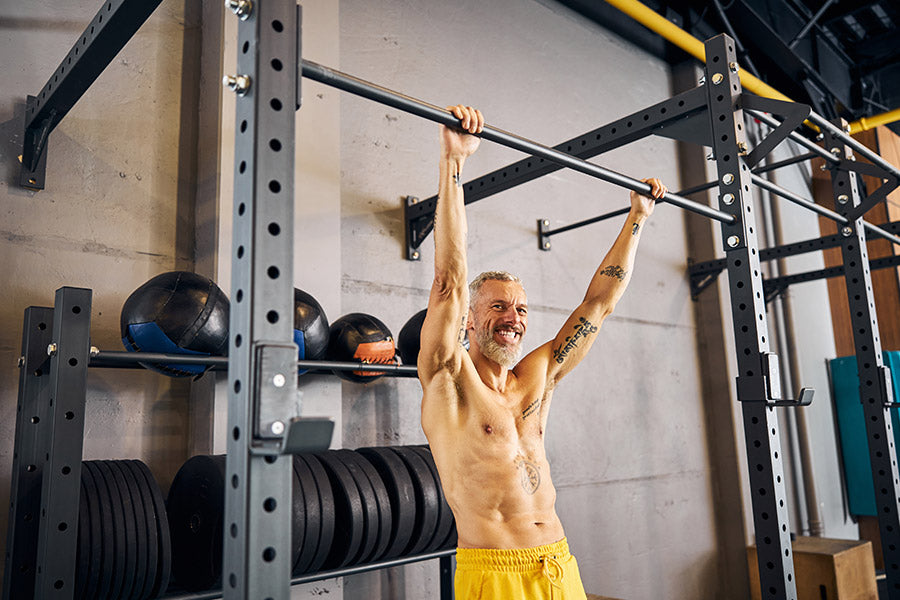
The dead hang is a simple but effective hanging bar workout that can be performed almost anywhere by using a hanging bar.
You can use palm grips for extra support. Following are the steps to do a dead hang:
- Use a step or bench to make it easier for your arms to reach the bar
- Hold the pull-up bar by an overhand grip
- Lift your feet off the step or bench to hang on to the pull-up bar
- Arms should remain straight, at least shoulder-width apart
- If you are a beginner, hang for a few seconds, then increase the time
- Release your hanging arms after slowly stepping back onto the step or bench
- Repeat up to three times.
After knowing the exercise steps, many of you are probably thinking of the duration of these hangs. So, here are the details:
Beginners
As with all workouts, it's always advisable to begin slowly and build up as your stamina increases.
Try to hang passively for 20 to 30 seconds. You can achieve the same result for the active hang, although you might want to start closer to 10 to 15 seconds.
Intermediate
Passive hangers with some experience lifting weights should be able to hang for more than a minute, ideally closer to 80 to 90 seconds.
Set a goal of 1 minute of dead hang time for the active version and increase it each week.
Advanced
Passive hangers that can complete 90-second hangs with ease are prepared to put in some significant hang time.
You can hang for 2 to 5 minutes for both passive and active hangs.
Warning: Even the physically fittest may struggle to maintain an isometric hold in the active dead hang for this long.
Hanging as long as you can while increasing your weekly hanging time.
The Best of Dead Hang Variations
There are some variations of dead-hang defined below that give you the facility to perform dead-hang according to the variation that works best for you:
1. Underhand Dead Hang
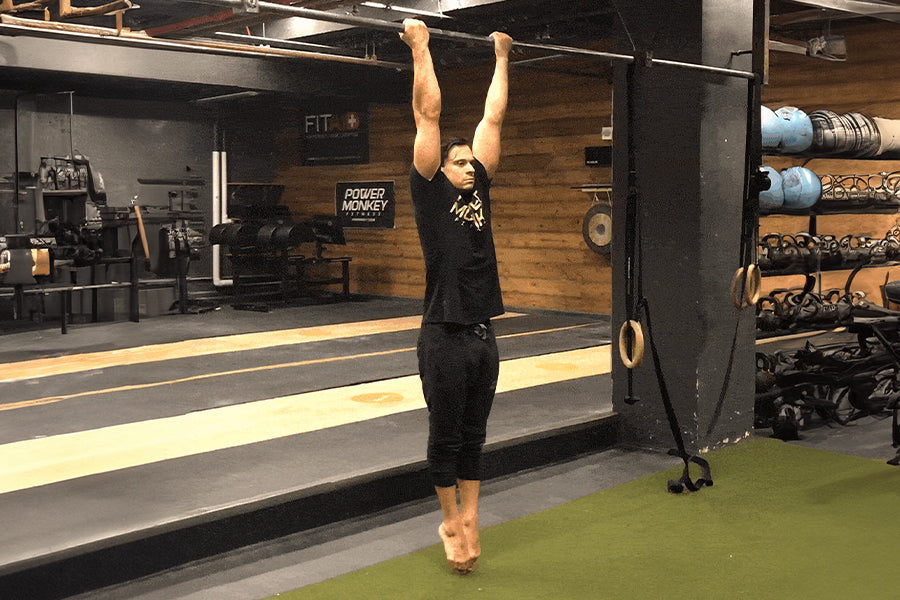
The underhand dead hang involves hanging with an underhand grip; your palms should face you.
This grip variation engages the biceps more than the overhand grip.
2. Overhand Dead Hang
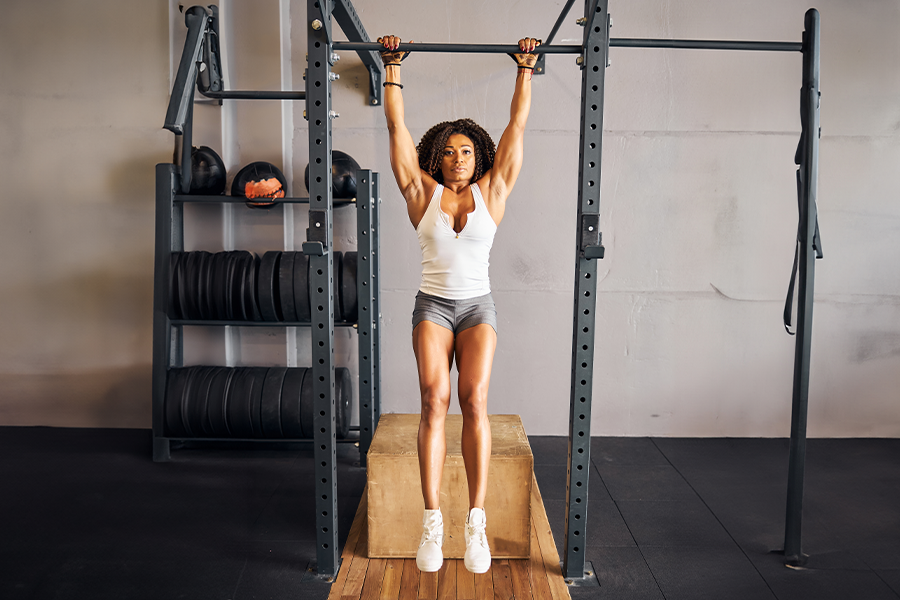
In the overhead dead hang, your palms should face away from you.
The overhand grip targets the muscles in the biceps and hand to strengthen them.
3. Neutral Dead Hang
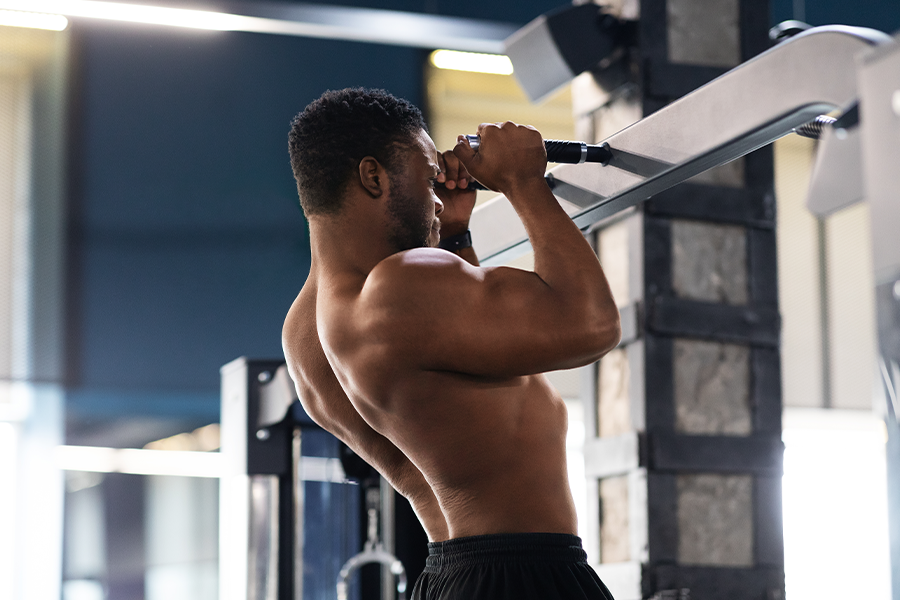
The neutral grip dead hang is also a variation of dead hang that involves hanging from a bar with your palms facing each other.
This exercise is good for strengthening the shoulders.
4. Single Arm Dead Hang
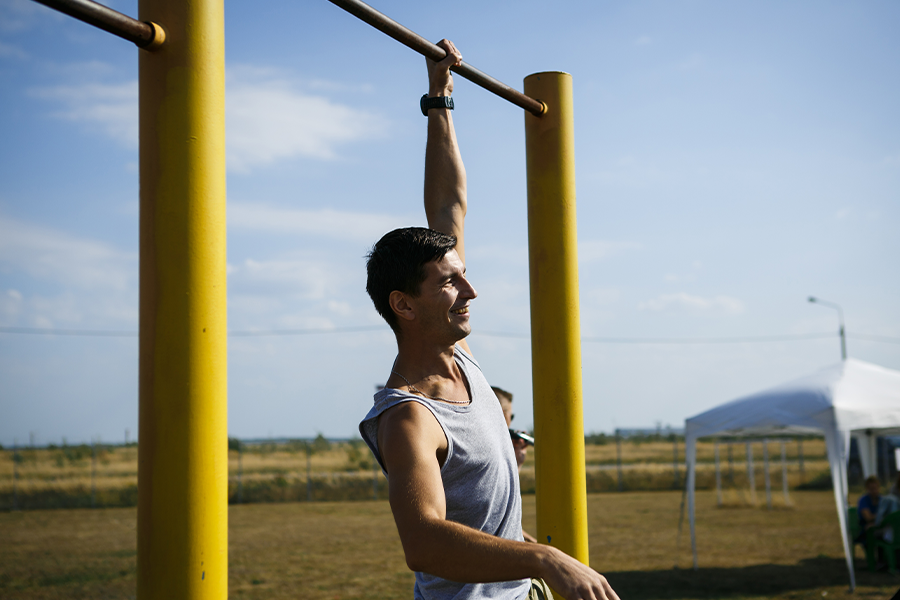
The single-arm dead hang is the more advanced variation of dead hang in which you use one arm to hang on a bar instead of two.
This challenging move requires balancing your entire body weight on one arm.
5. Towel Grip Dead Hang
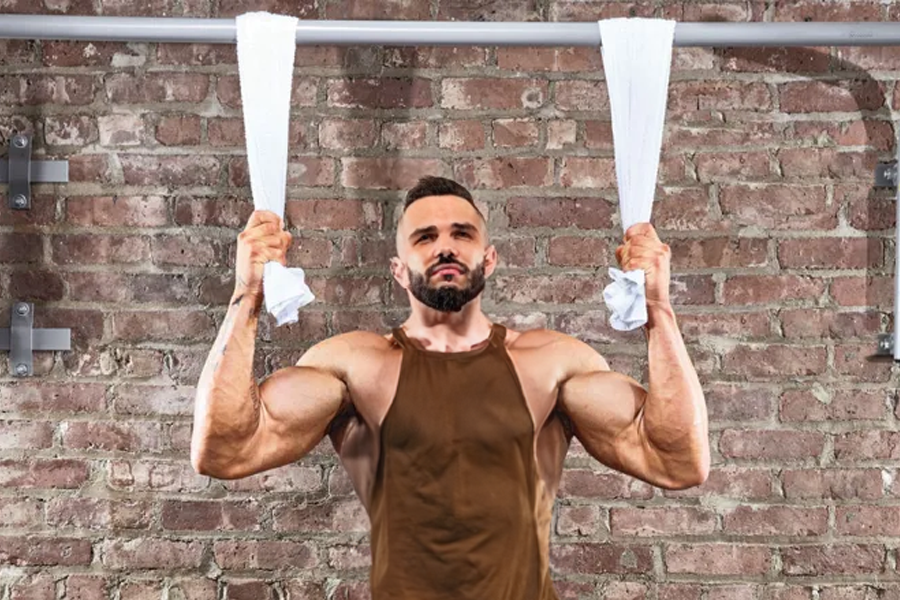
Towel grip dead hang is a different kind of dead hang in which you have to loop two towels over the pull-up bar and grab its end to perform this exercise.
This is a more challenging exercise and requires great stamina to do it properly.
FAQs
1. Does hanging help with your back pain?
Dead hangs are an unexpectedly helpful practice.
You can lessen back pain and stress by allowing your spine to decompress for a short period in between overhead lifts and squats.
2. Why do dead hangs hurt?
Dead hangs can be painful for a variety of reasons, like straining the tendons and ligaments in your hands and wrists, performing dead hangs with poor form, or using too much weight.
3. Can you dead hang every day?
It is not advised to do dead hangs daily but two to three times a week.
However, there are many advantages, including flexibility and strength gains, so exercising in moderation is crucial.
4. Does Dead Hangs Build Muscle?
Yes, the active dead hang can add mass to your biceps, triceps, shoulders, glutes, quadriceps, hamstrings, core, and back, making it a great supplement for a full-body workout.
5. How to hang on a bar for a long time?
Some techniques can help you to hang on a bar for a long time, like using a fat bar grip to make it easier to hold for a long period of time and doing dead hangs regularly to increase stamina.
Conclusion
Dead hang is a great exercise to increase strength and give your body the posture you've always wanted. But risks like grip issues, lower back pain, etc., are there.
You must use protective accessories to ward off those risks, such as a weightlifting belt will prevent lower back pains.
An accessory, like palm grips, will protect you from any grip-related issues.
While buying, go to a trusted store like DMoose that manufactures products of the best quality for its audience.
Reading List
10 Best Pulling Exercises for Building Muscle & Strength
Here's How You Can Fix Rib Flaring Posture Imbalance
Best Pull-Day Workout: Amazing Pull Exercises Explained By Trainers
Here are 8 Explosive Pull-Up Bar Exercises You Can't Miss!
How to Strengthen Grip — Best Exercises to Improve Your Grip Strength & Wrist Mobility
How to Exercise Your Hand: 5 of the Best Hand Exercises
Deltoid Stretches: 8 Stretches to Mobilize & Strengthen Your Shoulders










